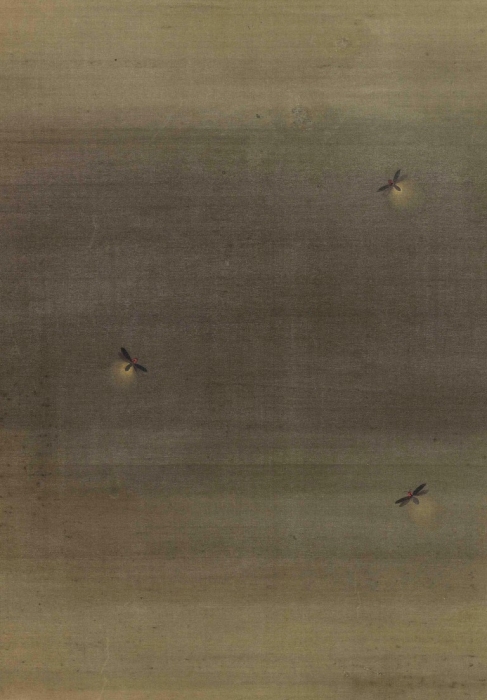Product Description
5733 Takagi Yasunosuke (1891-1941)
An unusually large paper kakemono (hanging scroll) painted in ink and colour with chidori (plover) on the sea shore
Entitled: Nagisa (Sea Shore)
Signed: Yasunosuke
Japan 20th century Showa period 1936
Dimensions:
Scroll: H. 272cm x W. 237cm (108” x 93¼”)
Painting: H: 216cm x W. 196cm (85” x 77¼”)
Provenance: Meguro Gajōen, Tokyo
Exhibited and published:
Bunten, Tokyo Metropolitan Art Museum, 1936
Meiji, Taishō, Shōwa Nihonga hizō meisaku-ten, Meguro Gajōen korekushon (Meiji, Taishō, Shōwa Masterpieces from Meguro Gajōen Collection), Kyoto City Museum, 1983, no. 51
Shōwa shoki no nihonga meihin-ten, Bijin to kachō, Meguro Gajōen korekushon (Meguro Gajōen Collection, Masterpieces from Early Showa Period – Beauties, Flowers and Birds), Sogo Art Museum, 1988
Takagi Yasunosuke was born in Tokyo. In 1901 he began his studies under Kawabata Gyokushō (1842-1913) at his school, the Kawabata Gagakkō (Kawabata Art School). Later he graduated from the Tokyo Bijutsu Gakko (now Tokyo University of Arts) having studied under Matsuoka Eikyu (1881-1938) together with his colleague Yoshimura Tadao (1898-1952)
He participated in Shinkō-yamato-kai as well as Kinoka-sha and researched Yamato-e (Japanese style painting). He entered the first Teiten exhibition (1918) with ‘Morning Highland’ as well as sequential entries to the Teiten in 1929 and 1930. And he was permitted to exhibit at the Teiten without connoisseurship in 1931 and was invited to the Bunten exhibition. He admired Tawaraya Sōtatsu and Ogata Kōrin, and expressed his originality by bringing the Rimpa School’s decorative aspect into Yamato-e. Yet never too garish but calm and graceful style can be found here. His extensive research on the movement of tide is crystallised in this painting.









